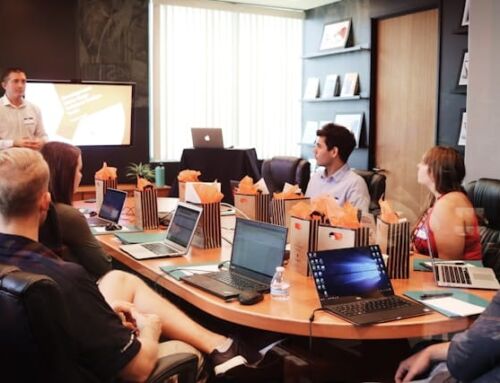The force of the internet and changing technologies can shift the economy and business practices within an industry overnight. Companies must adapt or die. Survival and growth depend on leadership’s ability to surmount obstacles and develop a plan for managing change.
Also read: Where do employees fit in your change management plan?
Companies all undergo continuous changes, from day-to-day policy to larger trends, but the reality of doing business in today’s market requires bolder and more significant shifts, such as M&A or restructuring. Keeping up employee morale and productivity can challenge leaders, since doubts may come up along with feelings of excitement or fear about the future. Leaders must especially focus on maintaining and growing a positive and engaging work culture during organizational change.
Cultivate Radical Honesty
Organizational changes may bring out skepticism or doubt among employees as much as excitement. Don’t expect employees to keep quiet about their fears or questions. Embrace the idea of radical honesty. Those who ask tough questions care and transparency will build mutual trust. Among employees, only 15 percent believe their leaders cultivate honesty in the workplace.
Open up about the possibilities of the future with your employers and embrace their feedback. Such openness will foster more confidence, trust, excitement, and productivity in the office during the shift.
Leaders Must Share Motivation and Vision
If you’re going the route of M&A, all leaders need to share motivation and vision to find success, since 83 percent of mergers don’t succeed. Get to know one another as human beings and professionals. Relationship-building is crucial in the upper ranks because the effects will ripple down to team members as everyone interacts and forms a more positive and productive work culture.
Also read: How Can A Manager Truly Inspire A Team
Many leaders only gather long enough to put pen to paper and develop a change management plan. But more is needed to ensure prosperity. When leaders don’t unite, they promote inconsistent messages in the organization, which can build fear and doubt. Retaining key talent and support systems proves integral to M&A and transition success.
Employees can feel confused and wonder if their responsibilities are the same, and if too many responsibilities are placed on employees, they’ll feel overused and under-appreciated. Clearly, communicate every step and leave channels open for radical honesty.
Actively Involve All Employees in the Process
Use a people-first approach when communicating change initiatives with your employees, because every impact affects each individual differently. One-size-fits-all change management plans don’t exist. Most of the leadership will spend their time in the planning process and make sure all the boxes get checked, but your people and their needs must come first so everyone functions on the same page productively.
Make employees decision-makers too, and involve them in the process as much as possible. Involve employees along with senior and middle management so that each individual finds meaning in their shifting role with joy and determination rather than fear or confusion.
As your company develops its plan of action, you’ll look at business structures, processes, strategies, and leadership approaches to see what works and what doesn’t any longer. Statistics and new business relationships work as motivating forces, but also consider employee needs. How can you improve conditions, resources, and benefits for your employees? How can you better support them in this change?
Employees need to know more than what’s on their new to-do list and who to report to. Knowing what they get out of it and how they impact the growth and vision of the business will ensure your company’s talent remains motivated and engaged.
Don’t Work Your Employees to Death
As the company grows, the entity proves difficult to manage for everyone, and making a list of increased responsibilities to hand out seems the easiest and most effective approach. It’s not. Don’t overwhelm or overburden your employees. Focus on human longevity alongside company longevity.
Also read: 5 Signs of Employee Burnout You Might Be Missing and What You Can Do About It
You may need to restructure the company into small subsidiaries or components to more proactively shape unique and meaningful environments for employee success. Every change comes with risk, and working independently feels risky — but the autonomy and freedom allow space for greater creativity and innovation.
Whether small or large, any shift that affects your company will pose a significant impact on your employees and their engagement levels. While change feels frightening, it doesn’t have to be that way. Employees must understand how they directly impact and empower company change and growth at all stages.
With transparency, radical honesty and involvement, your employees will remain engaged, productive and excited about the unfolding changes. Leaders must share motivation and vision to continuously coach and inform teams on their responsibilities while making each employee feel like their role remains intrinsic and meaningful. This is how your company will survive and thrive during organizational change, together.
Image licensed from Depositphotos.com






Leave A Comment